- Submissions

Full Text
Novel Research in Sciences
Wardrobe Management App: An Answer to Wardrobe Dilemmas
Abhishek Kumar, Akanksha Verma and Shakeel Iqbal*
Department of Fashion Technology, National Institute of Fashion Technology, Hyderabad, India
*Corresponding author: Shakeel Iqbal, Department of Fashion Technology, National Institute of Fashion Technology, Hyderabad, India
Submission: July 07, 2021;Published: July 22, 2021
.jpg)
Volume8 Issue4July, 2021
Abstract
This research paper excavates the factors which play a vital role in the organizational planning of the wardrobe. There are a few problems that are faced by individuals every day when it comes to managing their wardrobe. Some have difficulty in styling themselves while some people waste ample amounts of time in identifying outfits and selecting the best for a particular occasion. These problems may lead to frustration or might be the reason why people end up being late for occasions. This study broadly examines the difficulties that are faced by the individuals. This study also suggests an idea to reduce the time spent on the wardrobe and to maximize each individual wardrobe arrangement and styling potential. It aims at introducing some popular wardrobe management apps such as stylebook, purple outfit planner, Closet+ and Stylicious which can develop more effective relationship between people and their wardrobes. These apps can help to construct and deconstruct their clothing, follow new trends and get suggestions from experts on various issues. The study found that 53% of respondents are able to organize their wardrobe, but they would like it to be more detailed and adequate. It is also found that the individuals are not able to keep track of outfits which they are wearing. The paper finds that the majority of people are not aware of any existing wardrobe management apps, but it is also found that Stylebook is the most popular choice for the people who are aware of these apps.
Keywords:Wardrobe management; Organizing wardrobe; Wardrobe management app; Virtual closet
Introduction
In today’s world the standard of living for a large number of people is high enough to have an abundance of clothing, shoes, and accessories than their basic needs. So, managing wardrobes has become a headache for those stylish people who live fast in this competitive world. At present, most of the people follow manual method for managing their wardrobe and sometimes end up wearing the same clothes over and over again while the magnificent part of their clothes remains unused. There may be two main reasons for this problem: unplanned shopping and unorganized wardrobe. Some people may have both reasons. The solution to these problems is to have a clear understanding of the wardrobe and to do sensible purchases for the wardrobe. A wise purchase is that when we make the most out of the investment in that product by utilizing it on regular basis. Sometimes, it becomes really difficult to keep track of every cloth and accessories in our wardrobe. In this age of digital integration, great efforts are being made to digitize all aspects of our lives. Therefore, this research paper deals with wardrobe management apps that can eliminate most of the issues related to the wardrobe.
Objective of the Study
The purpose of research is to discover answers through the application of scientific procedures.
The objectives are:
a. To find the problems faced by people in managing their wardrobe.
b. Comparison of some existing popular wardrobe management applications.
c. To know which app is more popular.
d. To provide suggestions for the development of wardrobe management apps.
Literature Review
George Miller asserted that the average person can only keep around 7 items in their working memory [1]. This is definitely true for most of us while picking up outfits from the wardrobes when it is badly arranged. The law of proximity states that objects that are near, or proximate to each other, tend to be grouped together [2]. This is the reason why most of the time people end up wearing what they find nearer to them instead of putting their thought process in styling outfits. In an interview given to the guardian TV [3] fashion designer Ms. Vivienne Westwood very well quoted “Buy less. Choose well. Make it last.” When our wardrobe is properly arranged it is easier to locate what needs to be added in it and what needs to be discarded. It may also prevent reckless wasting of money on buying new outfits and making the most out of the existing clothes. “Having nothing in your house that you do not know to be useful or believe it to be beautiful” [4].
Many digital wardrobes apps have been introduced to help the people facing problem with the wardrobe management. Digital Wardrobe apps allow people to view their entire wardrobe, and choose outfits no matter where they are. “Building a well-balanced, versatile wardrobe takes time and thought. It isn’t a sprint-it’s a marathon” [5]. Users can easily mix, match and organize their clothes digitally on their computer or Smartphone by taking photos; they can bring it right into the digital wardrobe; and now they can move through the wardrobe.” Just let the wardrobe do the acting” [6]. This program helps people to bring their wardrobe to its fullest potential “Don’t be into trends. Don’t make fashion own you, but you decide what you are, what you want to express by the way you dress and the way to live” [7]. Users can try on pieces they want to buy with clothes they already own, planning what to wear for the entire week or month with the built in calendar, allows them to easily create an outfit by mixing and matching items from the wardrobe with slide through dressing room feature and by adding rating features to this application, Outfits can be organized in categories more and listed on a 5-star rating system allowing people to view outfits from top rated to lowest. We live in a world where people are spending increasingly more and more time on mobile apps, an average of five hours a day as reported by online app analytics website Flurry [8]. With the increased time spent, fashion applications generally serve as a bridge for retail brands and fashion communities to communicate with a prospective audience of buyers or users more readily. Currently, there are numerous fashion and apparel branded mobile apps available in the market.
The crossover of fashion and technology is a fertile breeding ground for new innovations [9]. Some of the most popular wardrobe management applications available are Stylebook, Purple outfit planner, Closet+ and Stylicious [10-13]. Stylebook is designed to help carefully curate the wardrobe to make it look effortlessly chic every day. It helps to get the most out of what already is present in the closet and helps in choosing new pieces that will integrate well into the wardrobe as a whole. A little organization can go a long way when it comes to getting dressed. Mixing and matching already owned apparel, comparing new purchases with the old ones, planning the outfits to be worn on vacation, and saving all the favorite style inspirations in one place can help develop personal styles of individuals using Stylebook [14,15]. It is available on apple app store for $3.99. Purple outfit planner is much similar to Stylebook [16]. It provides the easiest and fastest way to create a virtual closet by auto categorizing the items, providing ability to add from the web directly and editing multiple items at a time. As a virtual stylist, Purple outfit planner suggests outfits from our own wardrobe by learning the individual’s style. It is customizable and flexible. It also supports multiple devices and cloud backup. It is available for free on google play store and apple app store. Closet+ [17] is another app that lets us import our clothing quickly with the bulk-import feature, organize our clothing into categories/ subcategories, outfits, and favorites, track when items and outfits were last worn, their price, and their cost-per-wear and plan what to wear ahead of time by adding the items and outfits to the built-in calendar. It is available on apple app store for free for 50 items. It charges $2.99 for full version and $5.99 for future updates. Another wardrobe management app is Stylicious [18]. Its major features include closet and look book, style planner, shop and upgrade style, saving time choosing what to wear, upgrading style on a budget. It is available free of cost on apple app store and google play store [19,20].
Research Methodology
The purpose of this research is to find out the major problems experienced by people in managing their wardrobe and to know which wardrobe management app is more popular. The research involved collection of both primary and secondary data. A structured questionnaire has been designed to collect the primary data. The secondary data has been obtained from various journals, books and websites. The primary data has been collected from 100 people from different backgrounds via WhatsApp and Email. Statistical tools are used for the analysis of the data collected using questionnaires. Standard deviation, bar graph, line graph, pie chart and double variance chi-square test had been used to find out the internal consistency between the multiple measurements of a variable in a questionnaire.
Data Analysis and Interpretation
The research was conducted by asking respondents, who came from various professions and were of different age groups. 74% 0f respondents were of 20-30yrs. age group. 22% were below 20yrs. and 4% were above 30yrs. 59% of the respondents were female and 41% were female. A series of questions which drew us to a conclusion that the majority of the people have definite issues when it comes to their wardrobe. When asked about the organizational state of their wardrobe (Figure 1). 53% of the respondent chose “It’s adequate, but I would like it to be more detailed and appealing to the eye” 25% of the respondents chose “I need help in finding things, especially when I’m in hurry and 16% of the respondents chose “I need help with my styling, rather than organizing the closet”.
Figure 1: How organised is respondent’s wardrobe.
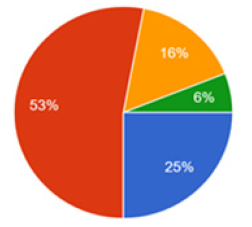
This suggests that people somehow manage to arrange their closet but become deficient when it comes to styling and making the closet look more interesting. A question was asked to know the average time spent for selecting an outfit by the people as shown in Figure 2. It was found that 46% spend 6-10 minutes, 26% of respondents spend 5 minutes or less, 17% spend 10-20 minutes and 11% spend more than 20 minutes.
Figure 2:Average time spend on selecting an outfit.
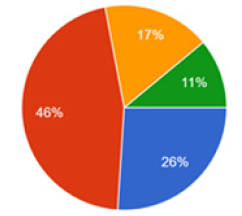
Above findings confirm that an app can be useful which can mix and match clothes out of the people’s wardrobe and that can also give style suggestions based on the clothes already owned. This will help in cutting back the time spent on choosing an outfit and can be utilized for some other productive activity. Different respondents had different approaches when asked about how they like to organize their wardrobe which can be seen in Figure 3. 66% of the respondents organize their wardrobe by the type of clothing, 12% organize their wardrobe by season, 11% by style, 5% by colour 1% by occasion and 1% of them randomly throw their stuff in a mound. We have also given the choice to comment their way of organizing wardrobe if it is not mentioned in options provided. The responses were as follows: a) I never organized my closet ever; b) Occasions like first formal wear, office next semi-formal wear, home wear etc.; c) I just throw clothes in bags and keep; d) By colour and season both.
Figure 3: Common way of organizing the closet.
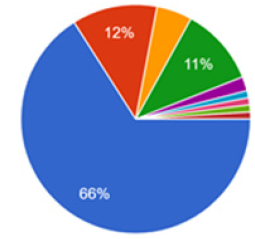
We also asked how the respondents spend time in redefining their wardrobe to which they had mixed answers as shown in Figure 4. 36% want to spend time in finding something that looks good on them to redefine their wardrobe, 24% want to search for perfectly fitted and comfortable clothes, 21% of respondents want to do shopping for pieces to redefine their wardrobe and the remaining 19% want to spend time in organizing their wardrobe. Hence, the app should have features which solve all problems from styling to organizing to shopping for the clothes of the people.
Figure 4:How time is spent in redefining the respondent’s wardrobe.

It often happens that we open our wardrobe and get frustrated by the struggle of finding anything that looks good on us. When we asked a similar question, we found that the majority of the respondents feel the same and sometimes have an urge to completely change up their closet. This finding hints that change is necessary, however changing the entire wardrobe is a heavy investment and practically unaffordable, therefore it stresses the fact that a wardrobe management app will be an inexpensive investment option that will mix match the existing clothes of the closet and bring out a new style that is apt for the unsatisfied respondents.
The survey asked if the individuals ever received a comment on repeating the same outfit in a week/month to which 53% of the respondents answered “No” 25% answered “Yes” although 22% of them could not recall receiving this comment. The survey also asked the respondents what they do with their old clothes. 63% of the respondents chose “Wear it when I am at home”, 20% chose “Donate it to some organization” and 17% chose “Hand it down to a younger relative”. Both questions combined throw light upon two things. First, a feature where a date-wise timeline of the clothes worn in a month/week is recorded can be very useful. This way we’ll not be left with any cloth that is not worn in a while. Second, we will be able to locate those clothes that have not been worn recently and can be donated to those in need. Additionally, this will lead to sustainability of clothes.
Through the questionnaire we found that some respondents are in genuine need to change up their style or needing help in arranging their closet. Therefore, we asked them if they would prefer to seek help by an expert on the various issues that they face. The responses can be seen in Figure 5. While 54% of the respondents were unsure what to answer, 25% of the respondents definitely wanted an expert’s help on the matter and 21% said “No”. We further asked if they would like getting packing suggestions for a trip from an expert to which 42% of the respondents answered “Yes”, 33% answered “May be” and 25% answered “No”. The implications of these findings further stressed the necessity for an app that may contain the feature to connect the users to an expert that excel in the respective regions. Hence, we asked the customers on a scale of 1-5 (one being the least and 5 being the most) how likely were they to use an app that will solve their wardrobe related dilemmas and the response is shown in the Figure 6. 29% rated 4, 28% rated 3, 19% rated 1, 13% rated 2 and 11% rated 5.
Figure 5: Preference of seeking help by an expert for wardrobe.
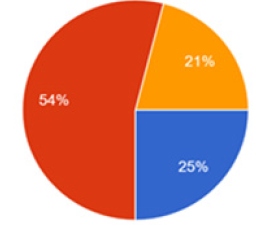
Figure 6:Rating of willingness to use an app that can solve their wardrobe dilemmas.

From the result, we conclude that if such an app is introduced, customers may be willing to use these apps to solve the dilemmas. Hence, we further asked if they will be willing to pay a small amount of money for using such an app. 46% of the respondent answered that they may try for a few months, 42% said “Not at all” and 12% said “yes if the service is great”. This suggest that the app should have free trial facility for at least 1 month to understand its features and importance. It might be possible that the willingness to pay is depending on gender of the respondents. We further did a hypothesis test to know it Table 1.
Table 1:Observed frequency and expected frequency in double variance chi-square test.

H0 = The preference of payment is independent of the gender, H1= The preference of payment is dependent on gender. Level of significance (𝞪)=0.05, Degree of freedom=2, Critical value=5.991.
We calculated, X2=0.021. Since, 0.021<5.991. Therefore, we fail to reject the null hypothesis. It means the preference of payment is independent of the gender. 7 females out of 59 and 5 males out of 41 are willing to pay and also 27 females and 19 males are in dilemma. They may try for a few months. There are a lot of wardrobe management apps available on the google play store and apple store. To know awareness about these apps we chose four popular apps from google play store and apple store and asked a multiple choice question which can be seen in Figure 7. 68 respondents revealed through the survey that they have not heard of any of these apps before. 21 respondent told that they have heard about Stylebook, 12 respondents heard about Closet+ and 7 respondents heard about Stylicious, and 6 respondents heard about Purple outfit planner.
Figure 7:Popularity of available wardrobe management apps among respondents (respondents can select more than one option).
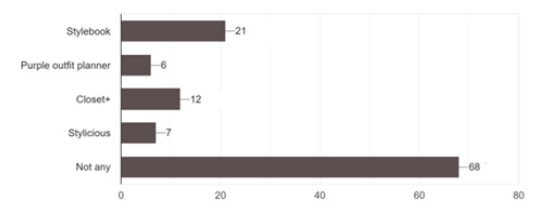
After being introduced to wardrobe management apps, the respondents also suggested quite a features themselves, which are as follows:
a. clothes according to body type,
b. notifying them for laundry day,
c. suggestion of matching accessories (shoes, earrings etc.), which colour should be worn on a particular occasion,
d. live interactive sessions by experts on regular basis,
e. notifying about the specific care instructions of the garment,
f. A.I. based 3D projection.
Findings
From the survey conducted, we found that 53% of the respondents are able to organize their wardrobe but they would like it to be more detailed and adequate. 64% of respondents are facing problems in finding an outfit for an occasion despite surplus options available in their wardrobe. 74% of the respondents are spending more than 5 minutes in selecting an outfit. Majority of the respondents (i.e., 66%) prefer to organize their wardrobe by type of clothing. We also found that the respondents are not able to keep track of outfits which they are wearing. Most of the respondents (i.e., 63%) prefer to wear the old clothes when they are at home that they have not worn in a while. Majority of respondents (i.e., 68%) describe their style as basic. It means they wear whatever looks good on them. Respondents are willing to seek help by an expert. Respondents have given an average of 3 preferences out of 5 for using a wardrobe management app that can solve all their problems. 68 out 0f 100 respondents are not aware of any existing wardrobe management app. But those who know about such apps, 21 respondents are aware about Stylebook app. We also found that the majority of respondents will show interest in paying a small amount for such apps after a free trial for some days. From the hypothesis test, we found that the preference of payment for a wardrobe management app is independent of gender.
Conclusion
It may be concluded that many people are in need of some kind of support to make their wardrobe more adequate and appealing to the eye and different respondents have different approaches when it comes to arranging their wardrobe. They also have surplus options available to choose from, but they are unable to find outfits for occasions, so they need help in arrangement of clothes and in styling themselves. Respondents are wasting lots of time daily in little things like picking up an outfit and some other wardrobe dilemmas. They would also like to minimise the time that is spent while packing for a trip if they are provided help by an expert. Most of the respondents do not have a track of the time they last wore an outfit and hence some clothes just take space in the closet and are not worn. Most of them are not aware of technical advancement which can help in managing wardrobe digitally. After being introduced to wardrobe management apps the respondents suggested that they might use such apps but are not willing to pay for the same. They also contributed few useful recommendations for the existing wardrobe management apps. Based on survey results, it can be concluded that Stylebook is the most popular wardrobe management app among all four of them.
References
- Miller GA (1956) The magical number seven, plus or minus two: Some limits on our capacity for processing information. Psychological Review 63(2): 81-97.
- Goldstein E, Bruce (2009) Perceiving objects and scenes and the gestalt approach to object perception. Sensation and perception, (8th edn), Cengage Learning, India.
- https://www.independent.co.uk/author/heather-saul
- Morris W (1880) The beauty of life, a lecture before the Birmingham society of arts and school of design, later published in Hopes and Fears for Art: Five lectures delivered in Birmingham, London, and Nottingham, pp. 1878-1882).
- Nina G, Claire M (2011) Annie heyward services.
- https://www.brainyquote.com/quotes/jack_nicholson_380129
- https://www.brainyquote.com/citation/quotes/gianni_versace_338929
- Khalaf S, Kesiraju L (2017) US consumers time spent on mobile crosses 5 hours a day.
- https://www.independent.co.uk/life-style/fashion/features/fashion-apps-retailers-roll-together-shopping-and-social-networking-mobile-customers-10367330.html
- https://apps.apple.com/us/app/id335709058?mt=8
- https://play.google.com/store/apps/details?id=com.app.pureple&hl=en_IN
- https://apps.apple.com/us/app/closet/id309532414
- https://play.google.com/store/apps/details?id=com.fabu.stylicious&hl=en_IN
- https://www.andpossiblydinosaurs.com/theres-an-app-for-that-stylebook-v-closet/
- Morgan B (2017) This closet app helped me live like cher horowitz (and here’s what i learned). Apartment therapy Organize and clean.
- https://ellehache.com/2017/11/07/pureple-outfit-planner-app-review/
- https://www.pcworld.com/article/2918496/what-to-wear-these-clothes-manager-apps-help-you-dress-better-for-work-or-play.html
- Imogen L (2016) 7 popular wardrobe and outfit planning apps reviewed. Inside out Style.
- Ayesha S (2019) My closet: A UX case study.
- Etebari D (2012) Intelligent wardrobe: Using mobile devices, recommender systems and social networks to advise on clothing choice. UBIRA ETHESES pp. 1-211.
© 2021 Shakeel Iqbal. This is an open access article distributed under the terms of the Creative Commons Attribution License , which permits unrestricted use, distribution, and build upon your work non-commercially.
 a Creative Commons Attribution 4.0 International License. Based on a work at www.crimsonpublishers.com.
Best viewed in
a Creative Commons Attribution 4.0 International License. Based on a work at www.crimsonpublishers.com.
Best viewed in 







.jpg)






























 Editorial Board Registrations
Editorial Board Registrations Submit your Article
Submit your Article Refer a Friend
Refer a Friend Advertise With Us
Advertise With Us
.jpg)






.jpg)














.bmp)
.jpg)
.png)
.jpg)










.jpg)






.png)

.png)



.png)






